WTCR is a touring car race for cars close to stockcars
Author: Aleksandr Seregin
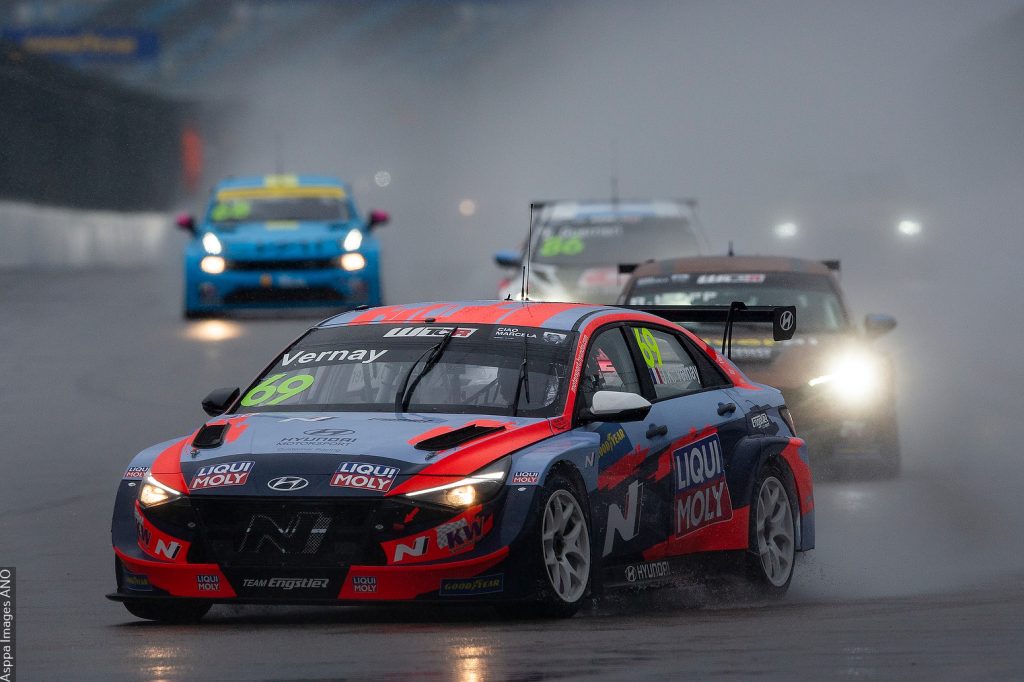
Closed-wheel touring car racing is highly popular all over the world. Now, of course, it is not such a spectacular competition as it was in the 90s and early 00s. However, these motorsport categories are still of some interest to fans. We are talking about ring races for cars that are as close as possible to ordinary road cars.
There exists a cup of the world touring championship for several years already – WTCR. Previously it was the WTCC World Touring Car Championship. The naming of the organization and the difference in regulations are most likely not very interesting for a fan. Much more curious is the show that the organizers of the races and their participants are ready to perform.
WTCR is now an auto racing competition, where both famous brands of ordinary road cars take part such as Hyundai, Honda, Audi, as well as little-known brands in Europe and Russia, such as the Chinese Lynk-Cyan which is in fact the Volvo company recently bought out by the Chinese. In the season of 2021, the listed brand teams competed with Cupra, a subsidiary of the Spanish brand SEAT. All these things are both interesting and not very interesting at the same time. Why?
These brands of car manufactures are not enough to attract a larger circle of spectators with entertainment at competitions, 23 cars compete on 10 different racing tracks. But this number of participants is very small for a touring car championship. In order make the races attractive at least 35 fireballs must participate, or even more. The cars themselves are not as fast as the usual Formula 1 cars or Le Mans series cars. The speeds here are lower but the race tracks are mainly adapted for racing on faster cars. Therefore, dissonance often arises: when the participants are dispersed along the track and local battles take place. Moreover, the weekend consists of two races, but very short, no more than 40 minutes per race.
One of the advantages of the championship is the similarity of fireballs with serial cars. It must be admitted that it is impossible to see Lynk-Cyan or Cupra on the streets of Europe or Russia. But in the peloton there are many recognizable and charismatic pilots who have a huge experience in touring car racing: Ivan Muller, Rob Huff, Thiago Monteiro, Norbert Micheliz, Gabriele Tarquini, Tom Coronel. All these guys are well known to fans of touring car racing, and not only. For example, Thiago Monteiro is an ex-pilot of Formula 1. Ivan Müller is a four-time racing champion, drives for the Chinese team Lynk, and his nephew Yann Erlacher who became the winner of the championship in 2021 is his partner.
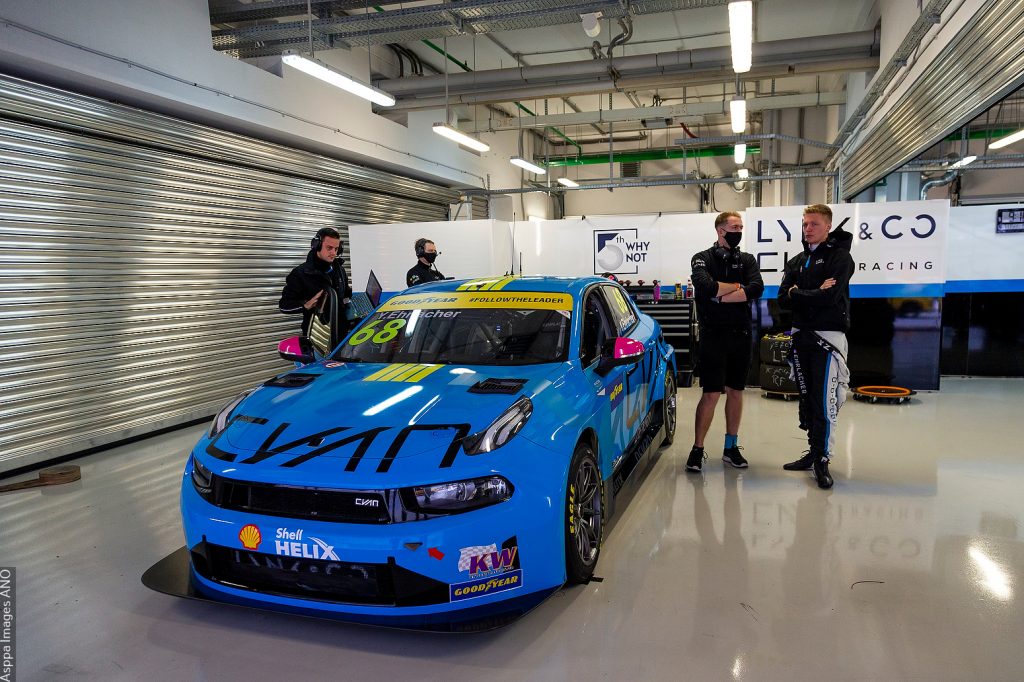
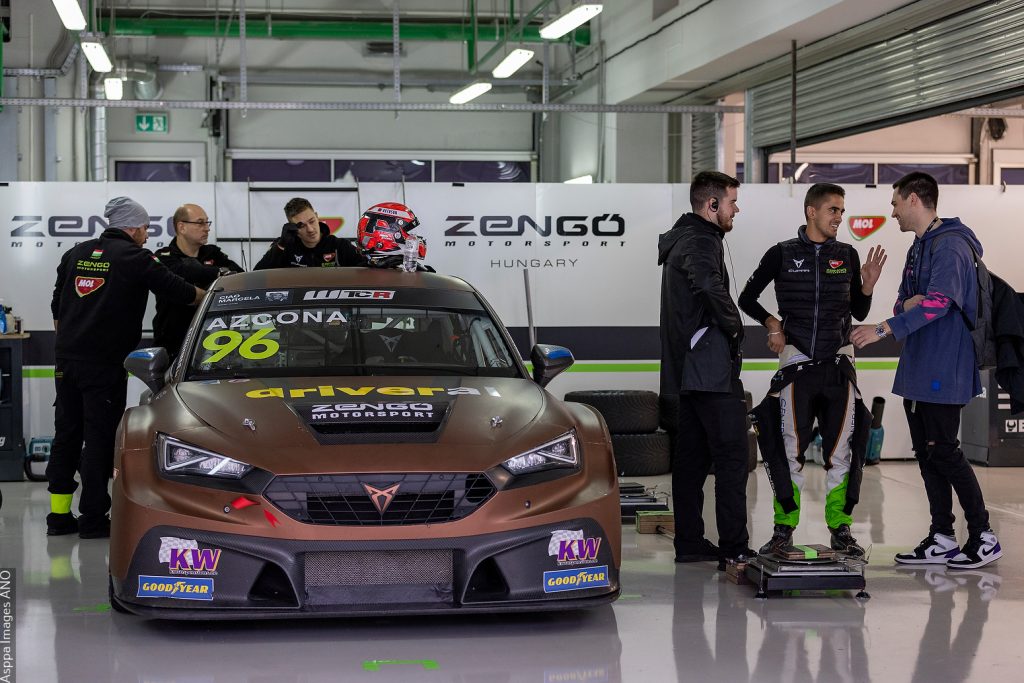
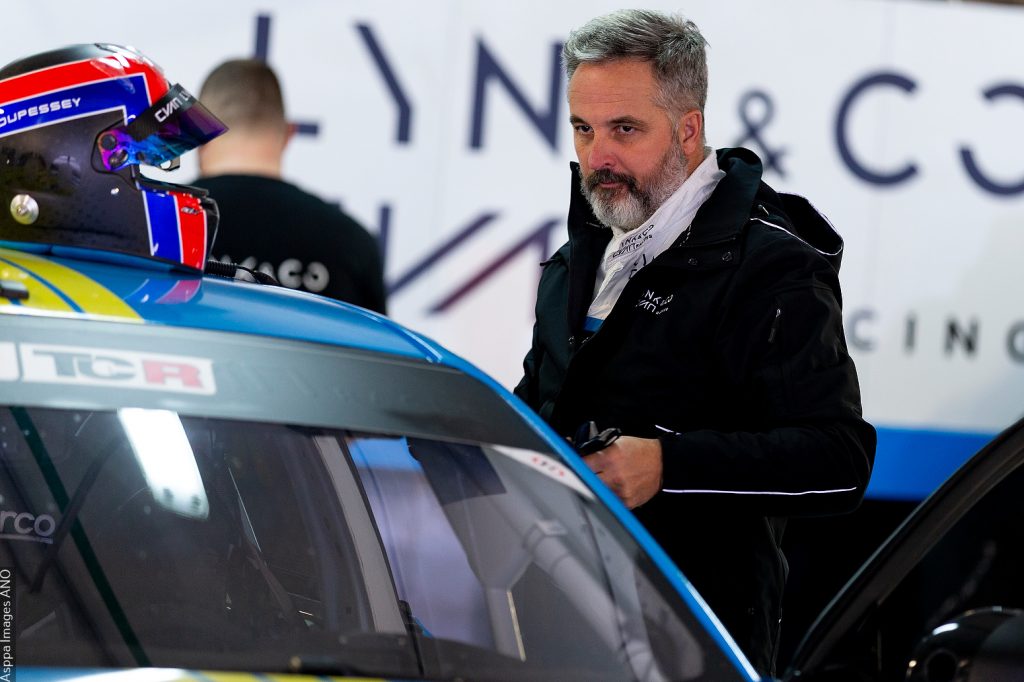
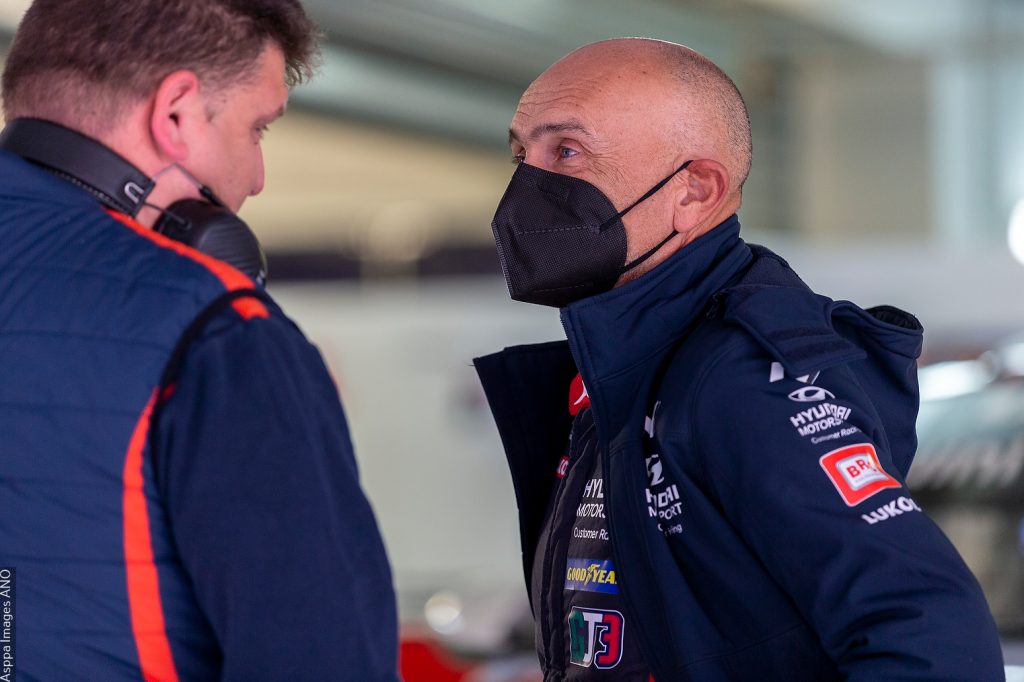
WTCR photography
I have filmed the WTCC-WTCR Touring Car Championship for five years starting from 2013. In Russia this touring car championship was held for several years on a race track in the Moscow region — Moscow Raceway. And this winding and hilly track with some narrow zones was perfect for a sharp and dangerous fight. In addition, it is noticeably shorter than the circuit in Sochi which was anyway built for mega-fast Formula 1 cars, and not for “serial” racing cars.
I will tell you about the aspects of racing photography of the WTCR Cup using the example of working at Sochi Autodrom in 2021.
The race track itself is of great importance for taking pictures at this cup. If shooting at Moscow Raceway is pleasant and interesting, then the circuit in Sochi is not fine in terms of finding interesting angles as there are too many fences. All this is done for safety reasons during the Grand Prix races. Nevertheless, Sochi Autodrom allows you to work with great pleasure at different points on ultra-long-focus lenses: from 600 mm to 800 mm with an extender. That is, to shoot fireballs for posters.
A peculiarity of photographing WTCR touring cars races is the limited time of the races themselves so it is difficult to go around the entire race track which is more than four kilometers long. What is important in this situation is to draw up an action plan in advance and distribute the work according to photo positions by days: there are some points for qualification and free races, and it is better to use other points during the race itself, so you will get a larger scope of material. It doesn’t matter to the viewer on which day the leader’s car was photographed close-up, unless of course the weather conditions were very different or this car was painted in a special way for a particular race.
As for the selection of equipment there is not much difference between photographing the Grand Prix races and the WTCR Cup. Here you also need very long-focus optics — 500-800 mm lenses, as well as an extender. Of course, it all depends on the tasks that you face. But if you photograph cars close-up, it is difficult to do without the above mentioned optics.
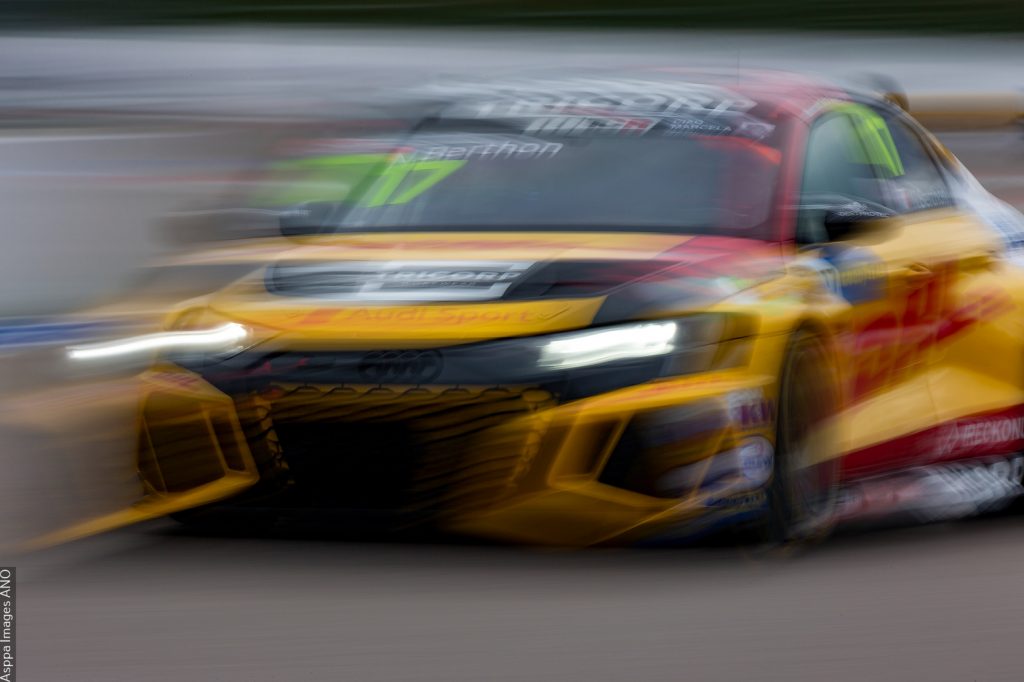
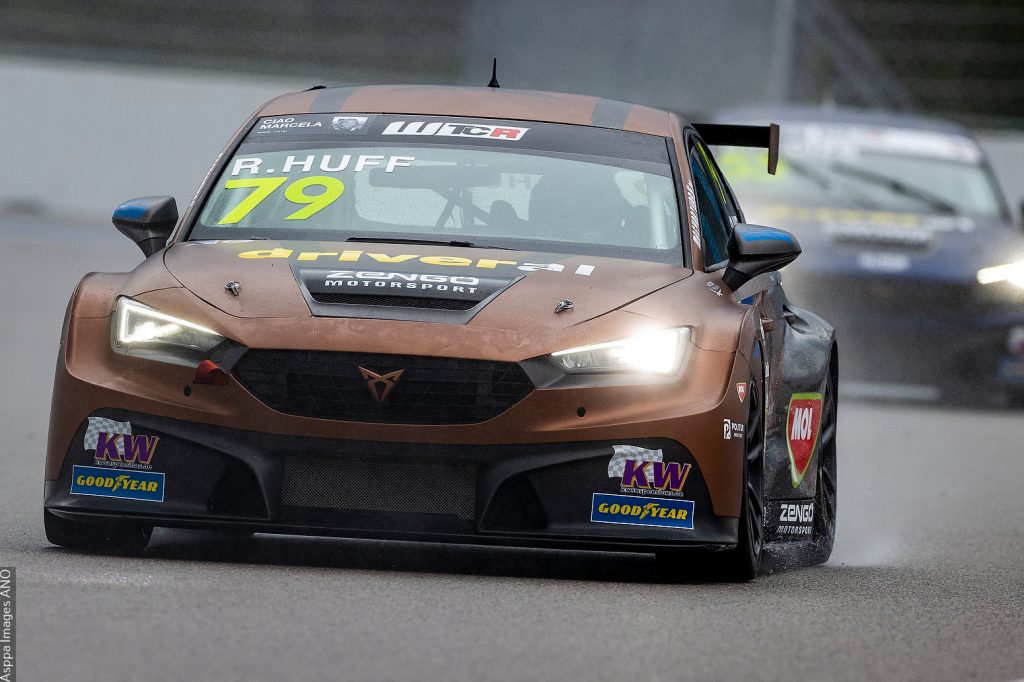
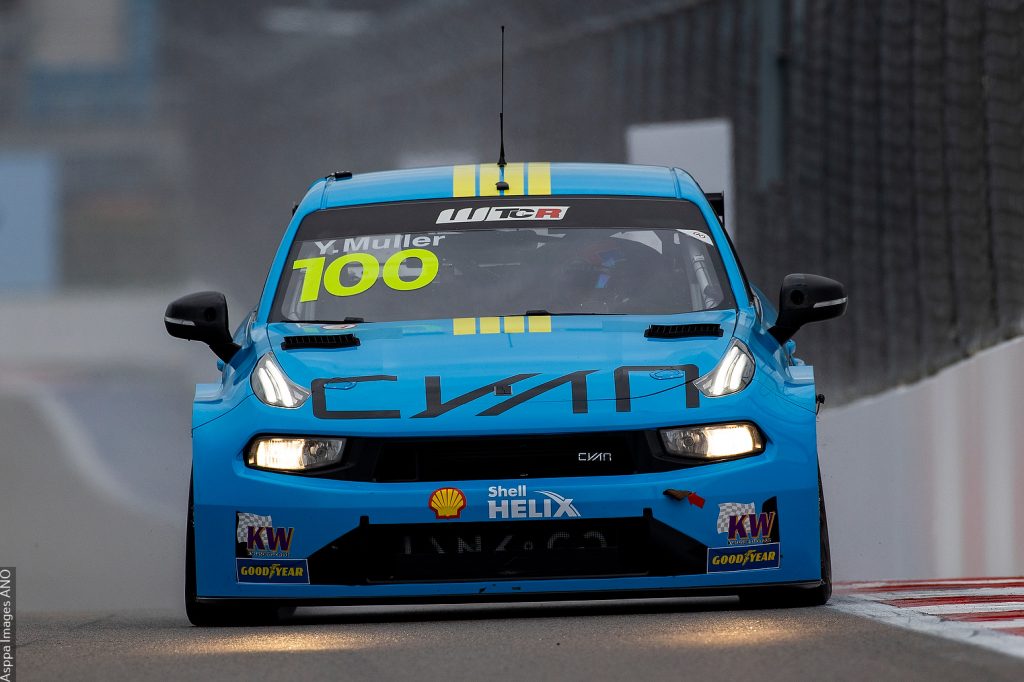
This weekend my choice of equipment, thanks to the support of Canon CPS, was not limited. I took with me to the race track the following equipment: Canon EOS 1Dx, Canon EOS 1Dx Mark II, Canon EOS 1Dx Mark III, Canon R5, and lenses Canon EF 400mm IS III mm, Canon EF 600mm IS II, Canon EF 70-200mm IS II, Canon EF 100-400mm IS II, Canon EF 24-105mm IS, Extenders 1.4x III, 2x III. Thus, the equipment for such a cup as the WTCR was more than sufficient.
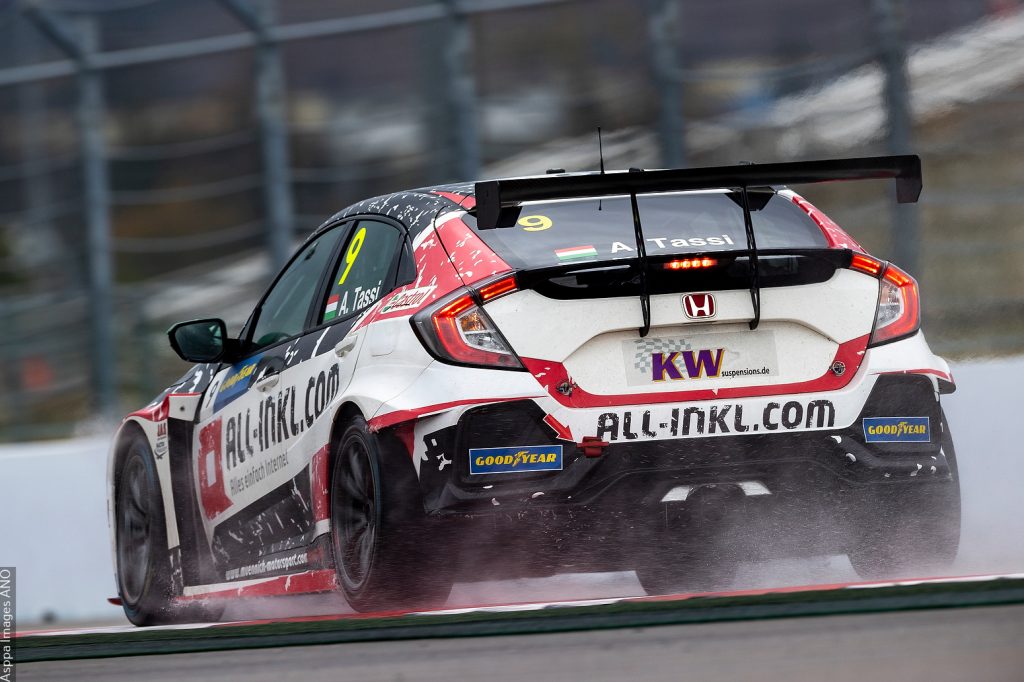
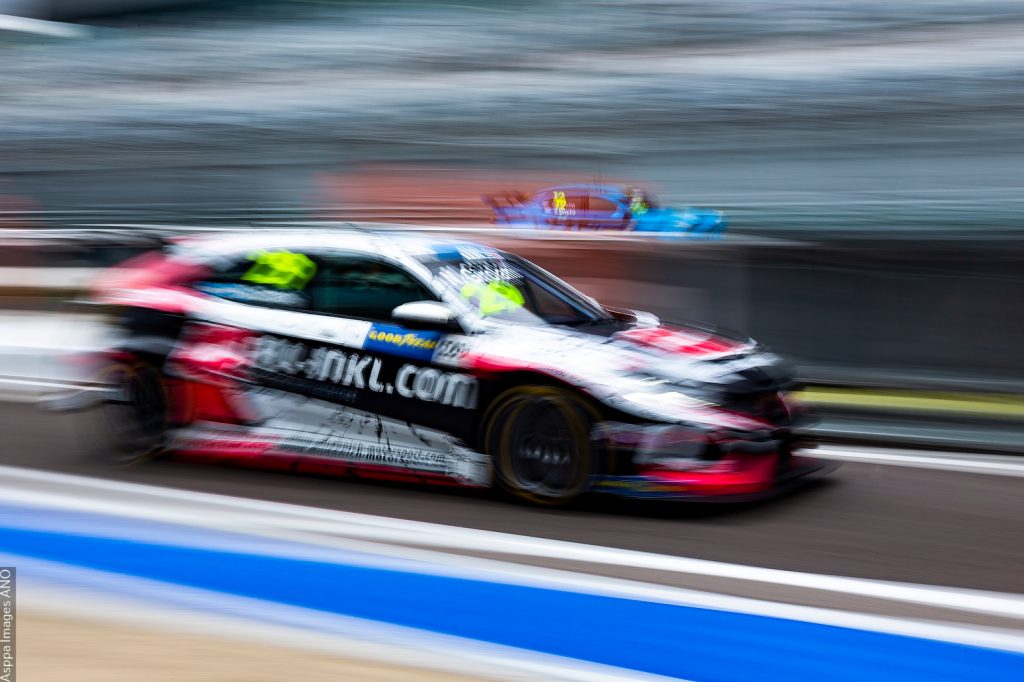
Photographing the WTCR on the race track
I went to shoot the first training session with Canon EOS 1Dx and Canon EF 100-400 IS II. The first generation of 1Dx is my beloved camera, the picture by this camera I still consider to be the reference for sports photography, with only one remark. The weak point of not only 1Dx but of the vast majority of photo systems is not very suitable work with high ISO in low light and bad weather.
Earlier in the era of digital resolutions up to 2k and 4k it was difficult to see any defects of a photo and printing a picture of a very small size for a magazine never made it possible to reveal quality flaws in detail. And now, in the era of high resolutions, even small flaws in a photo are clearly distinguishable. Of course, practically nothing has changed in the context of the press, with one exception: the print media in Russia have almost completely disappeared due to a terrible policy of overpricing and due to fear of the word.
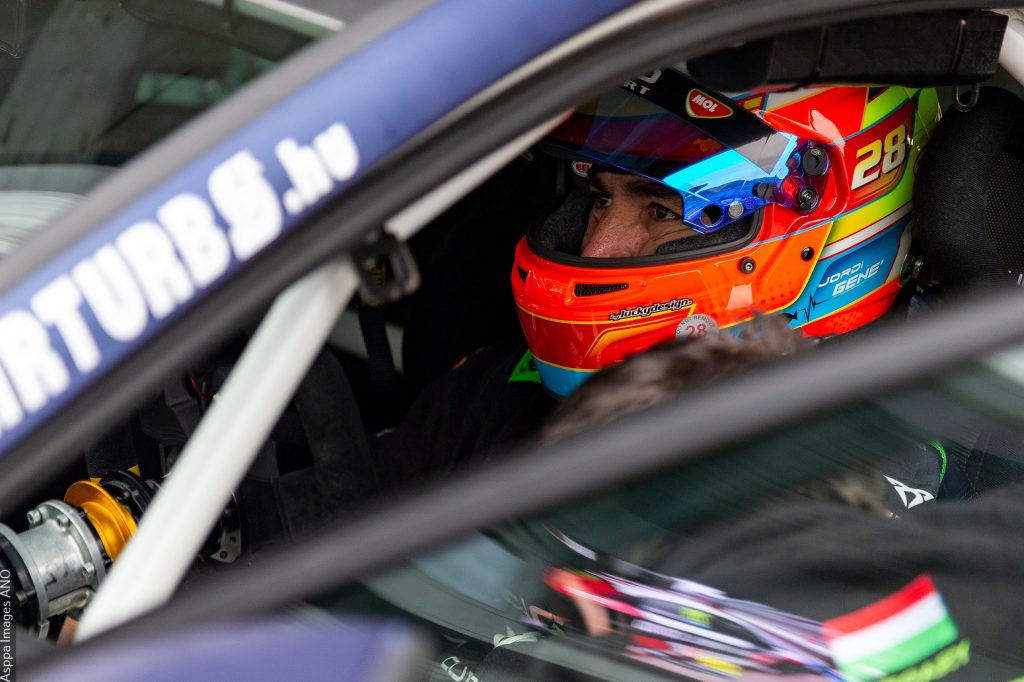
And for the layout of photo albums and books high-tech modern 4k and 5k displays are used. And whether you like it or not, even if everything is fine at the output with the image and it is good enough for printing then you can see technical quality flaws at high resolution what will make you very upset. This is even more of psychology but in the future, of course, I would like to avoid this moment.
For WTCR I have used such a combination of camera and lens more than once and the result has always been at a high level. Especially in good clear weather the quality of the photos taken with this camera is unsurpassed. The evidence of my words is the facts: photographers worked with both 1Dx and 1Dx mark II on the Formula 1 tracks up to 2020. That is, professionals did not see the difference between these two photosystems despite the technical improvements available in the second version of the camera.
On Saturday during the first trainings I went to one of my favourite photo positions of Sochi Autodrom and shot close-ups. Moreover I knew that I would have 1Dx of all generations in my hands for these two days, which means that it would be possible to compare the outcome. In terms of lens speed the 100-400 IS II is suitable even for Grand Prix racing photography if there is no choice in equipment. Nevertheless, it is better for such championships as WTCR, WRC, partially Le Mans. That is, where the speeds are lower than at the Formula 1 races which means that the requirements for the speed of the mechanism are slightly less significant.
The operation of the 1Dx Mark II is not much different from the operation of the 1Dx. Just the number of images suitable for printing and online publication will be higher. You can select 4-6 pictures from 10. Whereas in the case of the first version of the camera, the number is from one to 3–4. That is, the second version is a more productive photosystem. However, it has in my opinion a significant disadvantage which is so called «plasticine» picture with an even more noticeable warm colors what is not liked by everyone. And working with it in such software as Adobe Camera Raw is more difficult than with photo frames obtained from the first 1Dx.
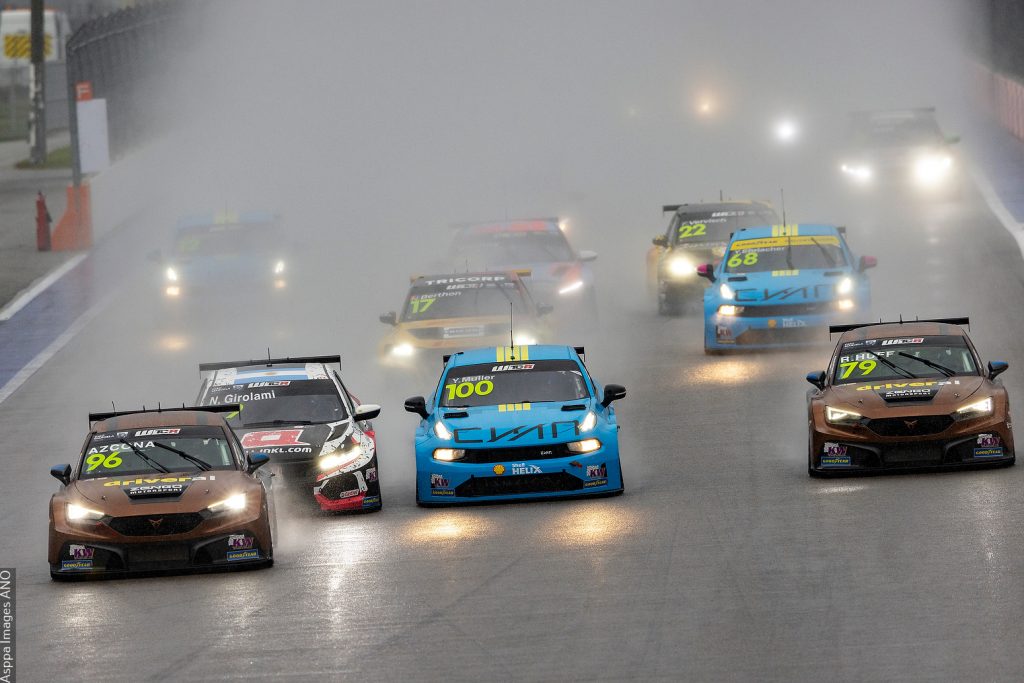
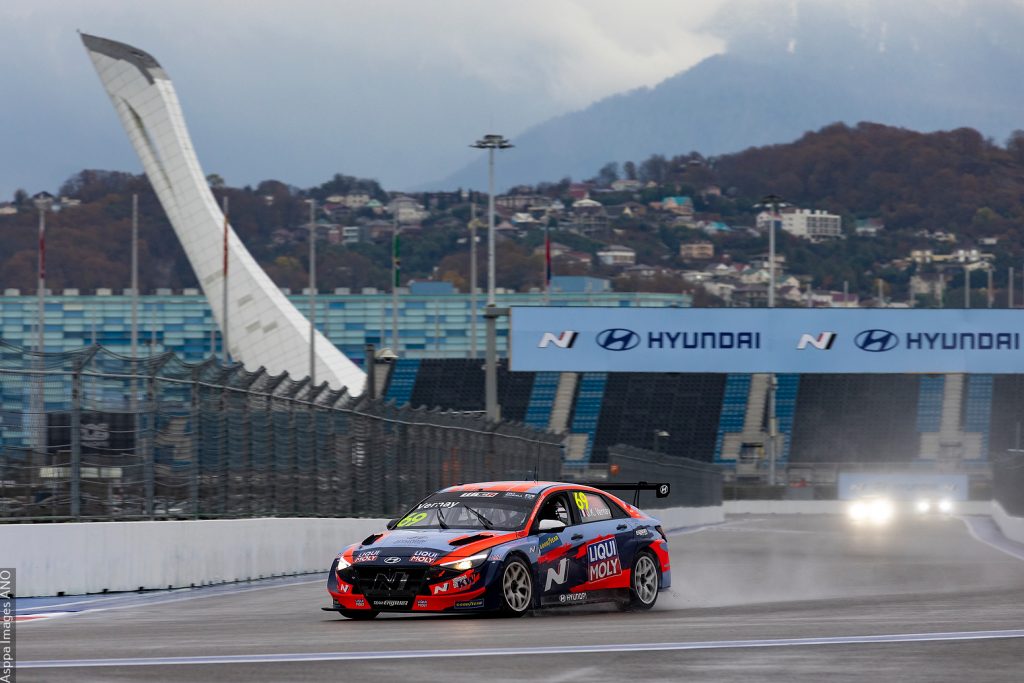
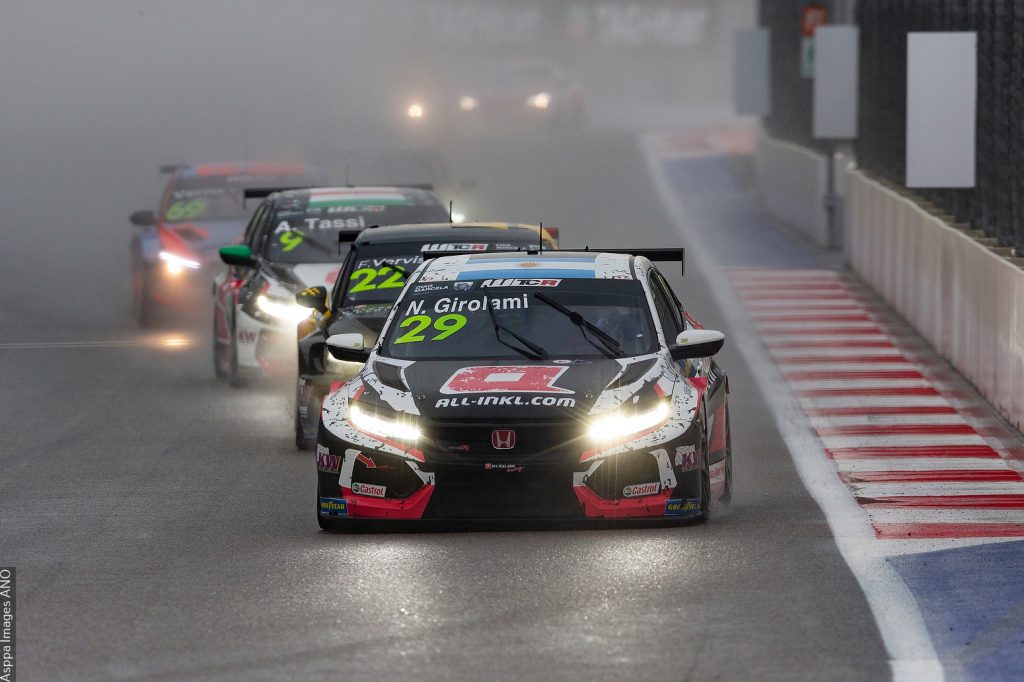
Canon EOS 1Dx mark III
As for photography with the Canon EOS 1Dx mark III, it was a very successful and interesting experience. Firstly, this camera works in such a way that you just enjoy listening to it. I want to shoot more and more. Some kind of waltz with a camera! And it’s impressive that the camera is your assistant here, you can focus more on the subject and the plot without thinking about the technical component. But with previous models you have to be very distracted by adjusting the exposure: the photosystem can simply not have time to work out as intended, or in the place wanted by photographer. In the case of the Canon 1Dx Mark III, I did not notice such a problem and that is why I enjoyed working with it.
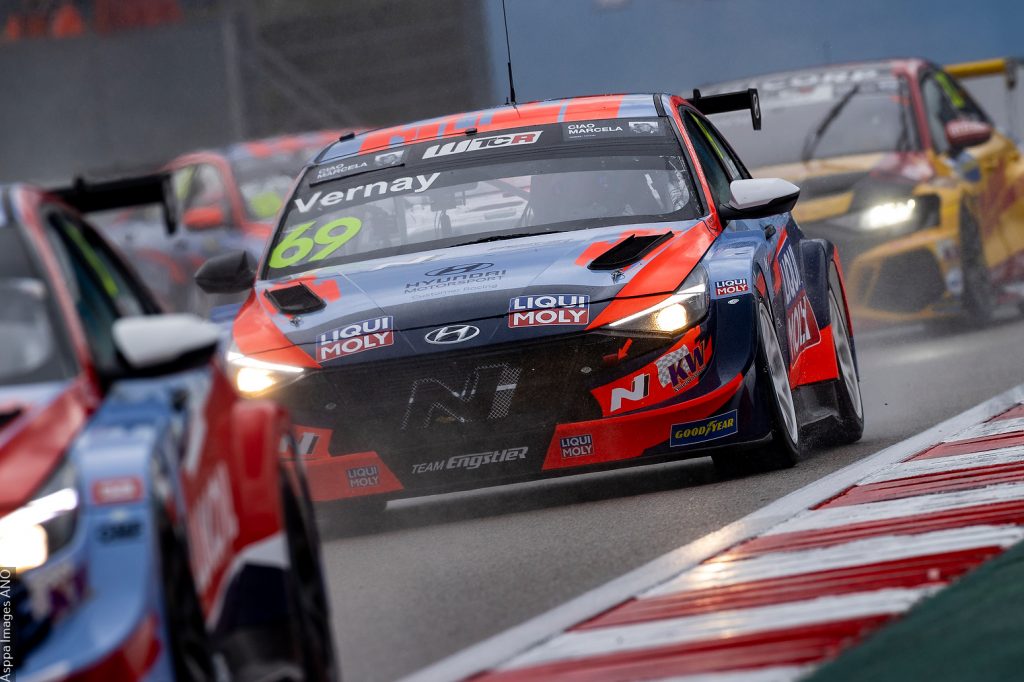
It was raining during the WTCR races and as it was late autumn it was getting dark quickly, so the Canon EOS 1Dx Mark III found itself in the most difficult conditions for photography. As a result, the picture by the Canon EOS 1Dx Mark III made a good impression on me. It is different in comparison with pictures by the 1Dx and 1Dx Mark II. You can see the slight signs of “digitization” of the picture by Canon R mirrorless photo systems. However, in the case of the sports Canon EOS 1Dx Mark III, the Japanese managed to find the right balance between previous camera models and modern mirrorless systems. I think this camera is really successful and will become the standard for cameras of the era of digital SLR photo systems.
Also working at high ISOs is still not great for me: the trace of high ISO is noticeable when using values from 2000 to 5000 units. This is applied to conditions when it is cloudy, rainy and no source of light. As I said, such problems are generally known shortcomings of all digital SLR cameras. However, the difference between 1Dx and 1Dx Mark III is more than noticeable, while the difference between 1Dx and 1Dx Mark II is not so striking.
What really impressed me about the Canon 1Dx Mark III is that the camera allows you to shoot at shutter speeds long enough for auto racing and get excellent results due to the tenacity of the system, of course, in conjunction with top-end 400mm and 600mm lenses. So in touring series if the car is shot a little from the side or completely from the side, when all the wheels are visible in the picture, then you should set the shutter speed so that there is a feeling of the speed shown by blurring of the wheels. The twisting effect demonstrates speed well but not every camera can allow the photographer to take a photo at medium or slow shutter speeds, while maintaining the clarity of the entire subject being shot, in this case I mean the body of the car.
In correspondence to auto racing the average shutter speeds are those from 1/320 sec. up to 1/640 sec. But each photographer may have his own criteria for choosing and assigning settings to one category or another. I consider to be long (for motorsport) shutter speeds everything which is longer than 1/320 sec. It is not so easy to take a good photo with a Canon 1Dx at 1/320 sec. You at least will have to try hard and do a few takes. In the case of racing, this is crucial as it leads to time costs. The car will go to the next lap and you will have to wait for it again, but if you took a good photo, you could move to the next photo position.
Canon EOS 1Dx Mark III allows you to work with medium shutter speeds and get excellent results with a small amount of waste when shooting bursts with a mechanical shutter. This is perhaps the most enjoyable camera I have ever experienced for 10 years of photography. However, the weight of the camera and the outdated ergonomics of the relatively new Canon EOS R systems remind that this camera is from the ending era of large SLR photo monsters, in the good sense of the word!
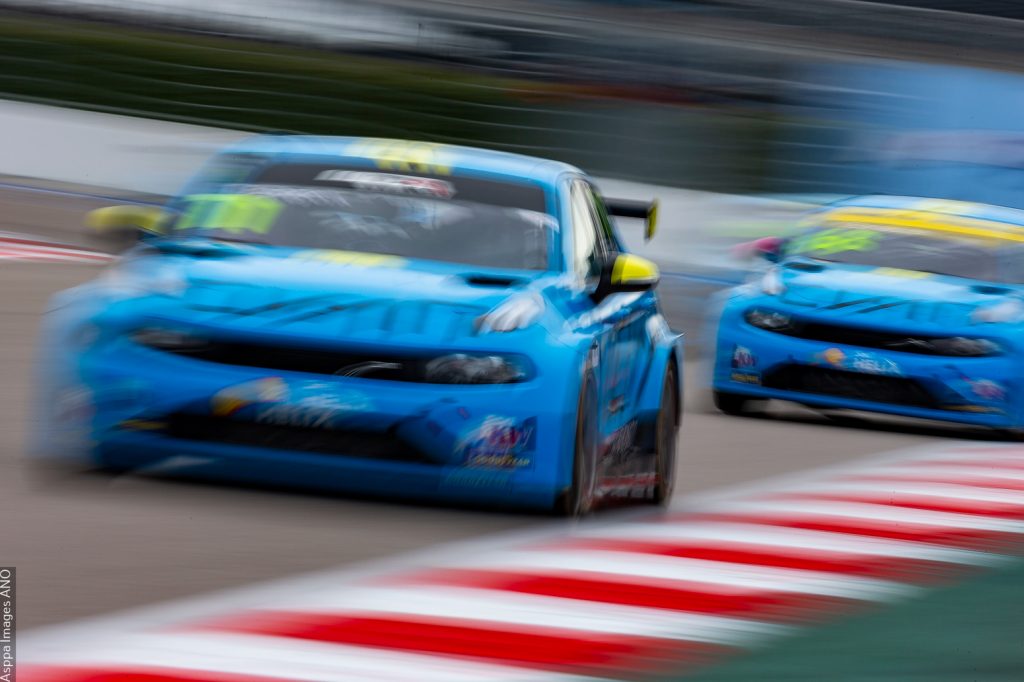
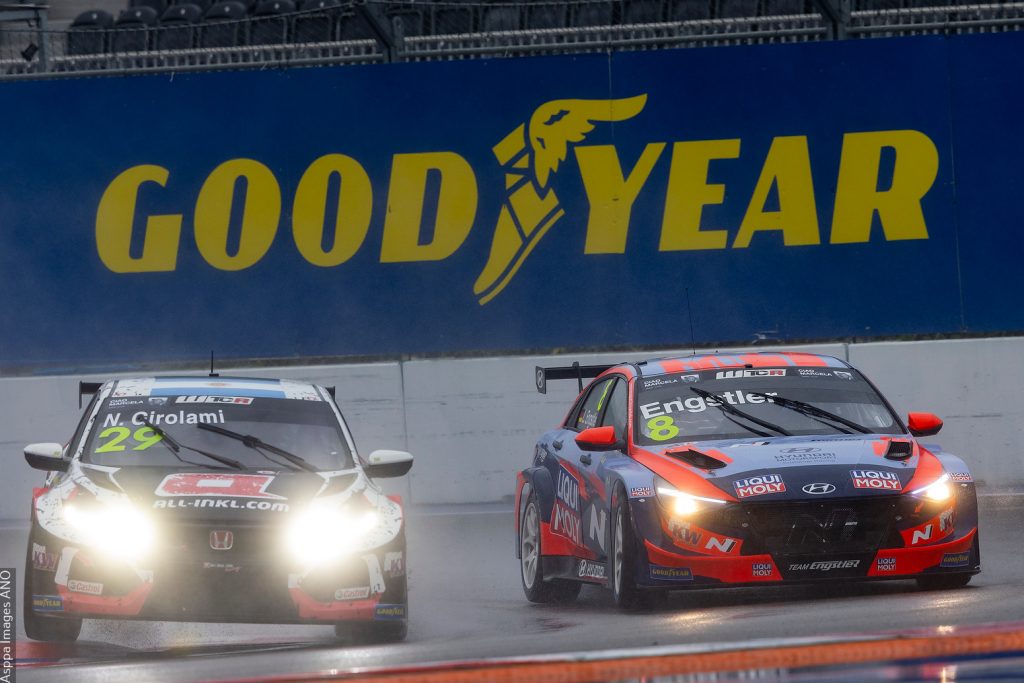

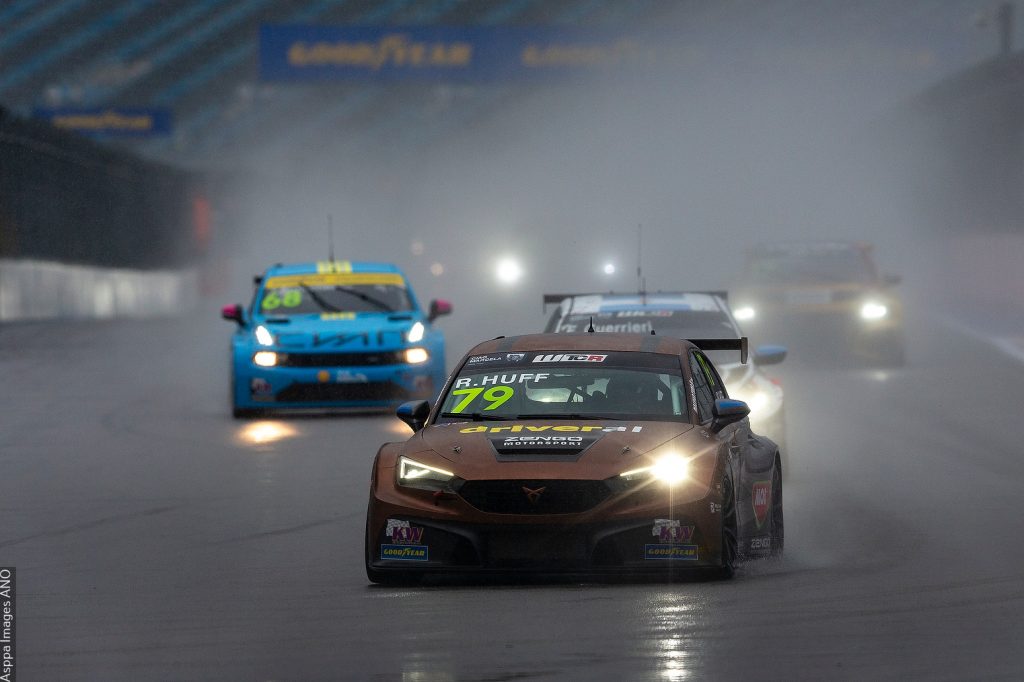
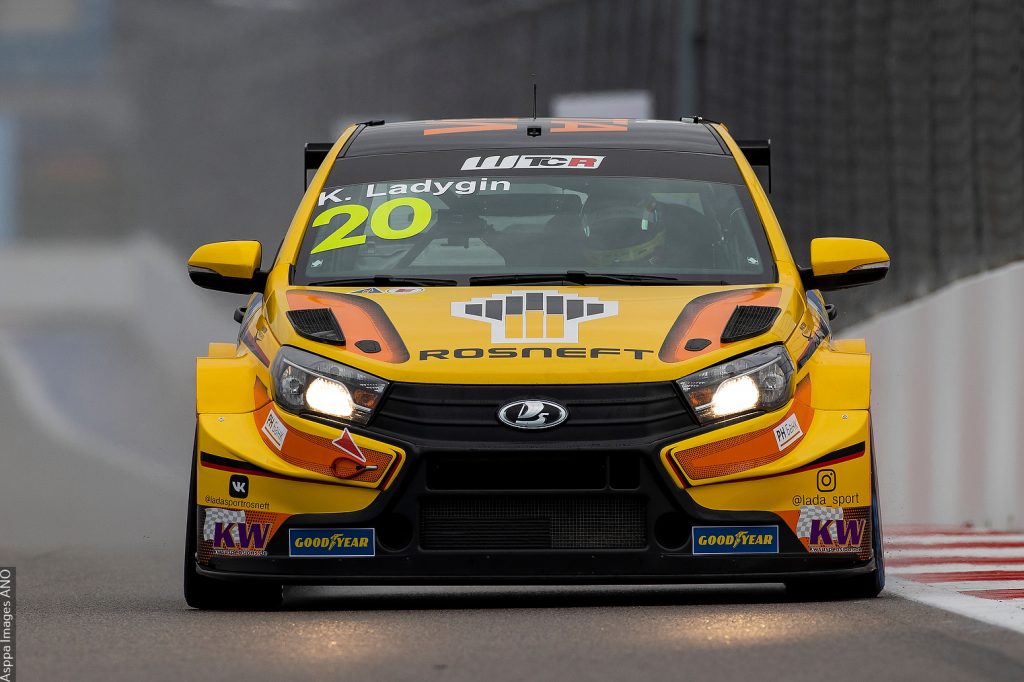
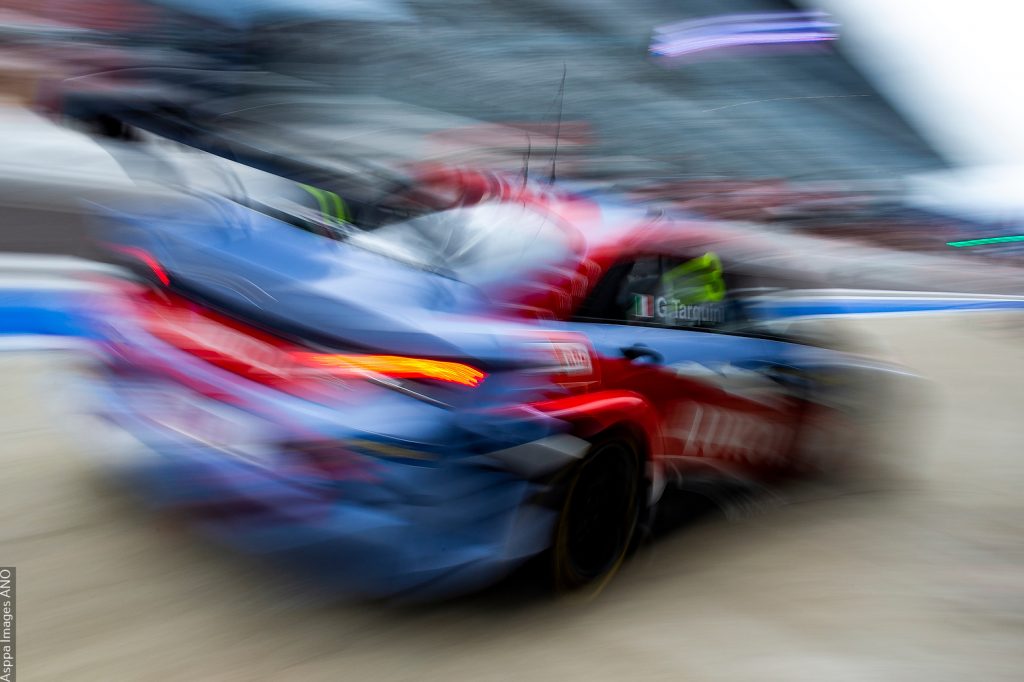
Lenses for taking pictures at WTCR races
I prefer to take frontal photographs of a poster plan with short shutter speeds, from 1/800 sec. up to 1/1250 sec. I see no reason to use shorter shutter speeds for such competitions as WTCR. These operating ranges allow you to take a high-quality sharp photograph in different conditions. Of course, when the weather is bad, at a shutter speed of 1/1000 sec. you will have to set a higher ISO, which will lead to quality losses in the final digital print. However, all these losses are invisible after resizing. The publication of photographs and printing of them as a rule do not require high resolution.
As for poster shots, for these purposes it is important to choose a telephoto lens for a specific race track. If we take, for example, the inner radius of the Hungaroring track in Budapest then a 300 mm lens is enough for the eyes, just in case with a 1.4x extender in reserve. But on the Sochi Autodrom track, you can’t do without 400-800 mm lenses.
This time I used a Canon EF 600 mm IS III which in combination with a 1.4x extender allowed me to get excellent results even in cloudy weather. I have already said and written more than once or twice that rumors about a significant drop in quality when using an extender, even 1.4x or 2x, are greatly exaggerated. If you have a tuned and non-defective lens together with tested and non-defective extenders, then the picture quality will be absolutely fine, even with a 2x extender. Yes, quality can go down on a 2x
extender but in the case of continuous photography in good weather conditions one shot out of 5 will be so sharp that you will have no doubts about the possibility of using a 2x extender.
This time I managed to shoot good material from a low position in one of the Sochi Autodrom corners. Frankly speaking, filming in this place is unacceptable and not even allowed but under certain conditions it is still possible, in the case of WTCR races.
This is quite a normal practice when you can ask the marshals to move a little and take pictures not from a high position on the ramp for photographers, but “from the asphalt”, which almost always looks more advantageous. By the wayit is normal not only in motorsport but also,for example, in figure skating and other sports categories.
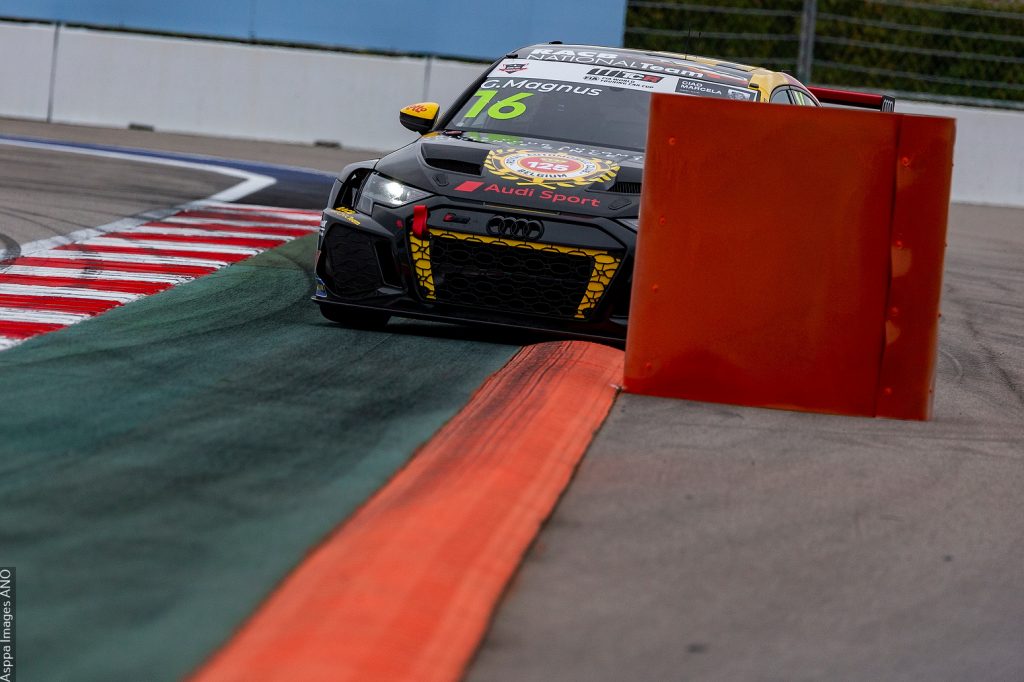
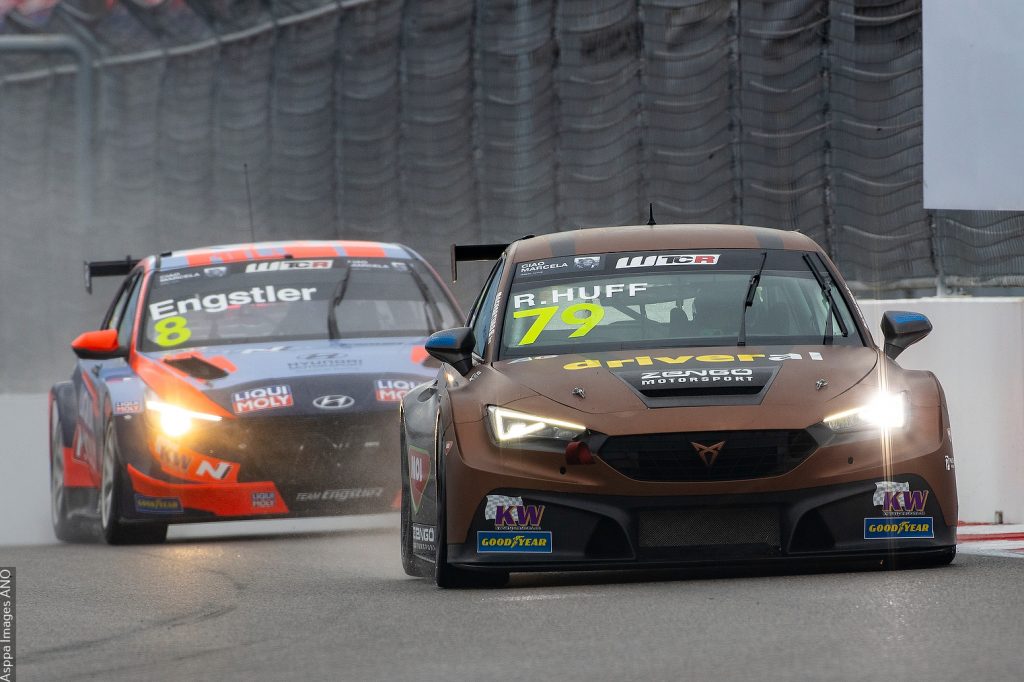
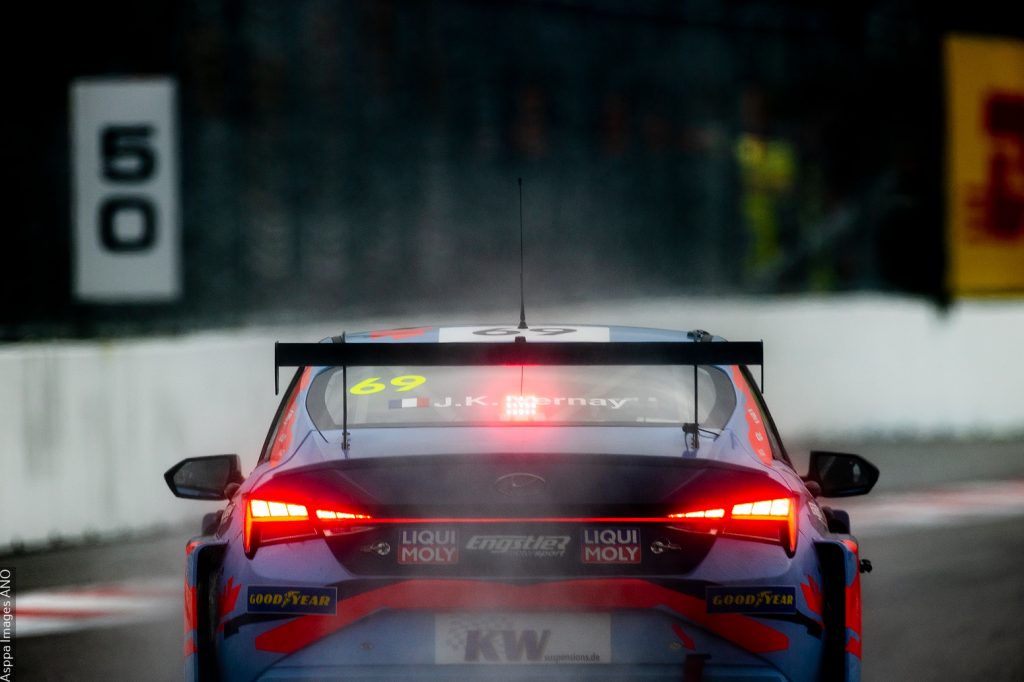
Canon EF 400mm f/2.8L IS III USM is absolutely excellent!
I especially want to note the work with the latest model — the Canon EF 400mm f/2.8L IS III USM super telephoto lens is an incredible lens with insane characteristics in a good sense of the word! Any sports photojournalist immediately falls in love with it, not only due to the remaining excellent level of photo quality, but also to its weight! The lens seems to be half the weight of its predecessor (though it isn’t: 2.8 kg vs. 3.8 kg) — this is a welcome benefit for race photographers on tracks! Working with such an unusually light telezoom of 400 mm is incredibly comfortable and convenient.
During Sunday’s race I used the Canon EOS R5 in addition to the 1Dx systems. This camera is notable for the resolution of its matrix. As a result the photographs have a resolution of 8k, which allows you to seriously crop the image and get an impressive result. However, here is the notorious problem of increased ISO, in which the cropped photograph is still not of as high quality as we would like it to be. These days I tested the Canon EOS R3 and previously worked with the Canon EOS R6. All these photo systems have a completely new picture with respect to 1Dx SLR cameras. The picture is noticeably «digital» and «pixelated» — this is the description that I defined for myself after working with these systems. And many photographers I’ve talked to over the past year have commented in a similar way about feelings of working with the R6 and R5.
However, the Canon EOS R5 itself has more balanced pictures compared to the relatively bright digital ones taken with the Canon EOS R6 and Canon EOS R3 (although this camera was still in prototype status and was due for sale in 2022). The colors and presentation on the R5 is somehow similar to the Canon EOS 5D Mark IV, and somehow similar to the 1Dx Mark III.
As for the convenience of working with the R5, due to its size and ergonomics, it is quite easy and convenient to control the camera. I can only confirm the experience of my colleagues who shoot Formula 1 and other top series that the R5 is good enough for photographing on the pit lane, in the pits, in the paddock, in the stands. On the race track, it is convenient to shoot long shots with the wide-angle lenses of this camera, and already at the post-processing stage you can crop the photo and highlight the necessary things.
Despite its compact size this fast camera allows you to make a good photo report, even without top-end 1Dx photo systems. I would recommend using it as a second camera for any competition, as it used to be with the 5D line which has often been and continues to be used by photographers as a second or third camera during international competitions.
So far, until the release of Canon’s top mirrorless camera for sports photography, the undisputed leader in the quality of the resulting material remains the Canon EOS 1Dx Mark III SLR camera. Canon mirrorless systems’ features are comfortable ergonomics, size and body materials in the case of the Canon EOS R3.